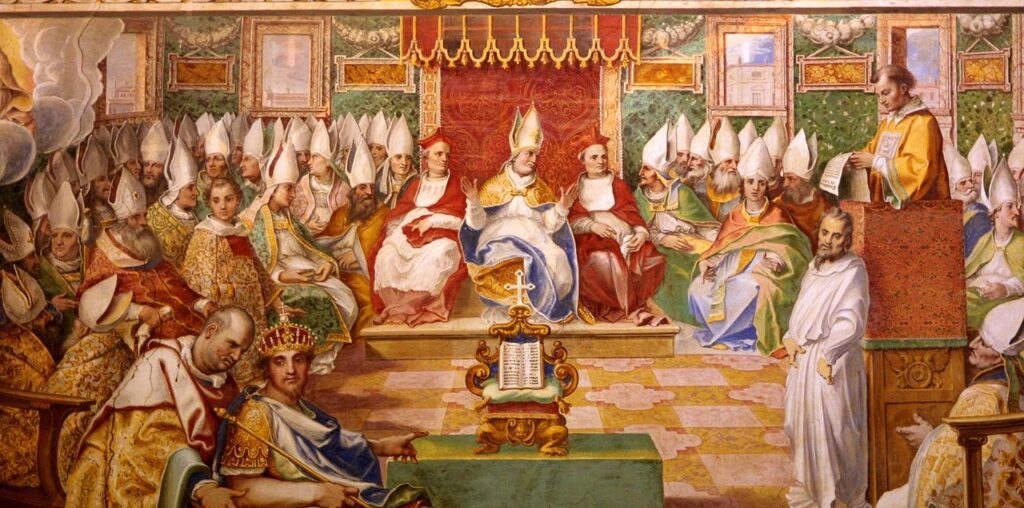The Nicene Creed is a statement of belief widely used in Christian worship. It is called Nicene because it was originally adopted in the city of Nicaea (present day İznik, Turkey) by the First Council of Nicaea in 325. In 381, it was amended at the First Council of Constantinople, and the amended form is referred to as the Nicene or the Niceno-Constantinopolitan Creed. It defines Nicene Christianity.
The Oriental Orthodox and Assyrian churches use this profession of faith with the verbs in the original plural (“we believe”), but the Eastern Orthodox and Catholic churches convert those verbs to the singular (“I believe”). The Anglican and many Protestant denominations generally use the singular form, sometimes the plural.
According to the Christian Reformed Church’s website (here), “The Nicene Creed … is a statement of the orthodox faith of the early Christian church in opposition to certain heresies, especially Arianism. These heresies, which disturbed the church during the fourth century, concerned the doctrine of the trinity and of the person of Christ. Both the Greek (Eastern) and the Latin (Western) church held this creed in honor, though with one important difference: the Western church insisted on the inclusion of the phrase ‘and the Son’ (known as the ‘filioque’ in Latin) in the article on the procession of the Holy Spirit; this phrase still is repudiated by the Eastern Orthodox church.
“In its present form this creed goes back partially to the Council of Nicea (A.D. 325) with additions by the Council of Constantinople (A.D. 381). It was accepted in its present form at the Council of Chalcedon in 451, but the ‘filioque’ phrase was not added until 589.”
The Nicene Creed (Catholic-Protestant Version)
I believe in one God,
the Father almighty,
maker of heaven and earth, of all things visible and invisible.
I believe in one Lord Jesus Christ, the Only Begotten Son of God, born of the Father before all ages. God from God, Light from Light, true God from true God, begotten, not made, consubstantial with the Father; through him all things were made.
For us men and for our salvation he came down from heaven, and by the Holy Spirit was incarnate of the Virgin Mary, and became man. For our sake he was crucified under Pontius Pilate, he suffered death and was buried, and rose again on the third day in accordance with the Scriptures.
He ascended into heaven and is seated at the right hand of the Father. He will come again in glory to judge the living and the dead and his kingdom will have no end.
I believe in the Holy Spirit, the Lord, the giver of life, who proceeds from the Father and the Son, who with the Father and the Son is adored and glorified, who has spoken through the prophets.
I believe in one, holy, catholic and apostolic Church. I confess one Baptism for the forgiveness of sins and I look forward to the resurrection of the dead and the life of the world to come. Amen.
# # #

